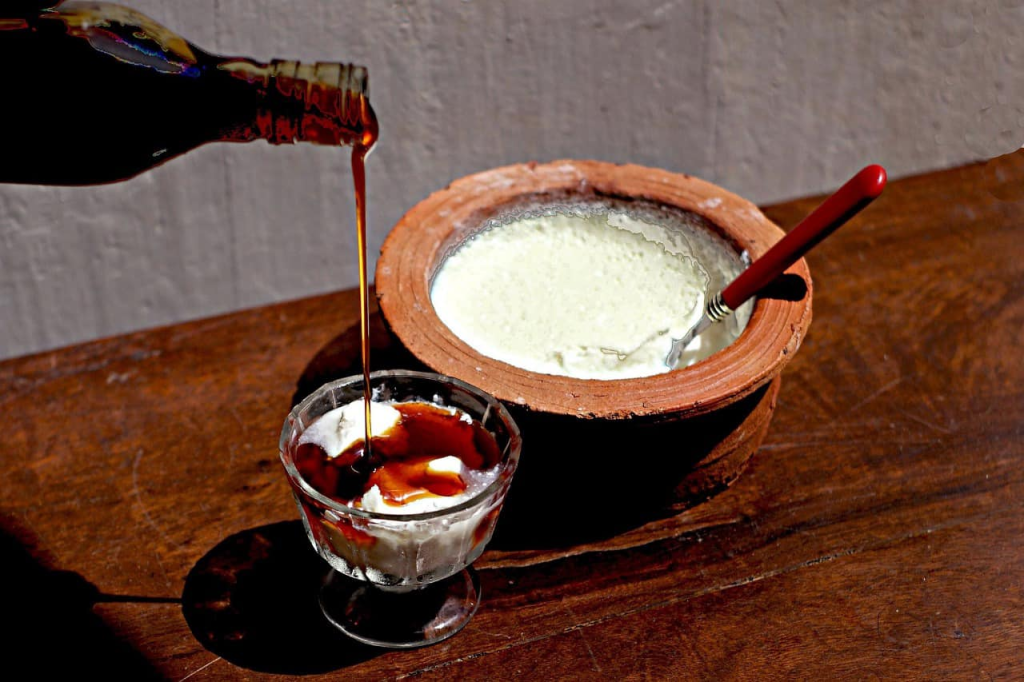A traditional dairy product revered for its rich creaminess and unique taste. Made from buffalo milk, this curd’s high-fat content gives it an unmatched texture that is both smooth and indulgent. The traditional method of preparation involves natural fermentation, which contributes to its distinct flavor and quality.

Cultural and Economic Significance
Buffalo curd is more than just a culinary delight in Sri Lanka; it is a vital part of the local economy, particularly in rural areas. Over 400 families in various villages depend on the production and sale of buffalo curd for their livelihoods. This traditional craft not only supports these families economically but also preserves a significant aspect of Sri Lankan culinary heritage.
Ingredients:
• Fresh buffalo milk
• Starter culture (old curd)
Preparation Steps:
1. Milk Collection and Filtration:
o Fresh buffalo milk is collected by hand-milking female buffaloes. Typically, a couple of liters of milk are needed for making curd.
o The milk is strained to remove any impurities or scum.
2. Boiling:
o The strained milk is poured into a large pot, traditionally a cauldron-like vessel, and boiled over a wood fire.
o The milk is boiled and stirred continuously for about two hours, reducing its water content by approximately 20 percent. This step intensifies the milk’s creaminess.
3. Cooling and Inoculation:
o After boiling, the milk is allowed to cool to room temperature.
o A small amount of old curd (starter culture) is added to the cooled milk. This starter introduces beneficial bacteria necessary for fermentation.
4. Setting:
o The inoculated milk is then poured into clay pots known as “kiri hatti.” The coarse and porous nature of these baked clay pots provides natural insulation and contributes to the texture of the curd.
o The pots are sealed with a paper lid and left undisturbed to set for 12 hours, usually overnight. The fermentation process transforms the milk into thick, creamy curd.
5. Storage:
o Once set, the curd can be kept in the clay pots for up to two days.
Unique Features
• Creaminess: The high-fat content of buffalo milk, along with the reduction of water content through boiling, results in exceptionally creamy curd.
• Clay Pots: The use of course, porous clay pots (kiri hatti) is crucial. These pots provide natural insulation, which helps maintain the optimal temperature for fermentation and contributes to the curd’s unique texture and flavor.
• Natural Fermentation: The natural fermentation process, aided by the addition of a small amount of old curd, ensures the development of a rich, tangy flavor profile characteristic of traditional buffalo curd.
